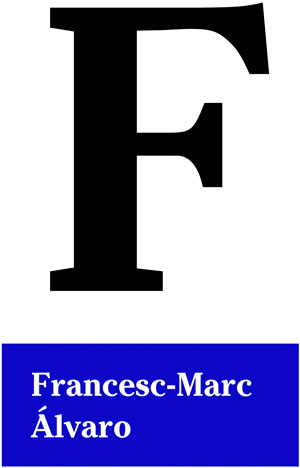06 Sep 2012 Manifestar-se el dia 11
Many people who have never or hardly ever been to a demonstration before have decided to demonstrate next Tuesday evening on the streets of central Barcelona. This 11th September will be a first for many. Without statistical ambitions and judging from recent conversations, it looks like these demonstrators will be of various ages, geographical areas, political affinities and social backgrounds. Something new is happening in the heart of the Catalan society, when social groups which do not tend to mobilise decide to be there. Something similar happened with the great demonstration in July 10th 2010 against the ruling of the Constitutional Tribunal on the Catalan Statute of Autonomy.
Interpreting the demonstration which is currently brewing will be easy and difficult at the same time. Easy because the slogan chosen for this demonstration (“Catalonia: a new state of Europe”) is very clear and does not allow any ambiguities. This slogan declares that the collective ambition goes beyond the status of autonomous community and beyond any fiscal deal with the Spanish government. Here is the first paradox: although parliamentary separatism has a limited electoral ceiling, it is the more citizen-led separatism that dictates the agenda for the new political year to the extent that the main parties are being dragged by a momentum which nobody seems to be able to control. This circumstance generates many questions both within and beyond the separatist movement.
At the same time, interpreting this demonstration will also be difficult because the Catalan government wants to use it to put pressure in the negotiation of a new fiscal agreement with the Spanish government: a very specific objective which actually is the last chance of maintaining the status quo. Indeed (and in agreement with some recently-ousted Catalan socialist leaders) the CiU leadership presents this demonstration as a means of saying to the powers in Madrid that the demands of a fairer tax relationship are backed by a very robust and active majority. And here lays the second paradox, which I have already outlined in previous articles: the new tax system is portrayed as the dam which holds separatism back and, at the same time, as a lever to accelerate a hypothetical secession process. This is the main weakness of President Mas’s main strategy, which (let us not forget) has received a very wide consensus.
Tuesday’s demonstration will not change anything overnight but will undoubtedly influence official politics. Therefore, the impact of the citizen’s gesture on reality will disappoint everyone to an extent. On September 12th, the Catalan Finance Minister, Andreu Mas-Colell, will continue to struggle to tally and to pay salaries and Catalonia will still be labelled as the autonomous community which has asked for a rescue from the Spanish government. And shortly after, on the 20th, Mas will meet with Rajoy in order to discuss the fiscal deal and not independence -a meeting of which nobody is expecting major outcomes.
Within the imagery of Catalan nationalism, mass demonstrations are paramount since they remind people of the key moment when this movement came of age politically, at the beginning of the 20th century. Back then, demonstrations embodied a strategic fusion of interests of the popular sectors, the intellectual groups and the more dynamic bourgeoisie around the identity demands influenced by Regenerationism. As it stands -according to the most optimistic of separatists- this year’s demonstration would evidence a new alliance of interests around a project which, after a hundred years of efforts, would have given up for good the “catalanisation” of Castilian Spain. There is still a lot of work to be done amongst the economic elites and amongst those citizens who either themselves or their families arrived to Catalonia from other parts of Spain during the 1960s and 1970s.
I am convinced that the demonstration on the 11th will be momentous and will encapsulate many things, as long as nobody neglects the cross-sectional and multi-faceted personality that Catalanism has historically had whenever it has been a mainstream movement. Thanks to these attributes Catalanism has become rooted and has grown strong, even during the worst moments of our History. Not everyone will reach on the same day or in the same way the conclusion which summarises the slogan of the demonstration organised by the Catalan National Assembly and the Association of Municipalities for Independence. Understanding this is essential in order to avoid sterile controversies and destructive sectarianism.
Two types of analysis might end up caricaturising the complex landscape in which the National day demonstration will take place. For some, self-determination is only a flame which is not connected to the real worries of people: crisis and unemployment. For others, the current effervescence of self-determination would enable a fast and easy secession. The battle between these two extremes will be fought on the 12th. One must escape from these simplifications and be precise in order to extract from this demonstration the lessons which allow us to distinguish between where we actually are and where it looks like we are. The country is changing in a particular direction, but the Catalan society has not stopped being very diverse internally, with opposing interests, contradicting feelings and overlapping loyalties.
Those of us who will demonstrate on Tuesday must keep in mind those who, despite all the grievances, will not have taken to the streets.


